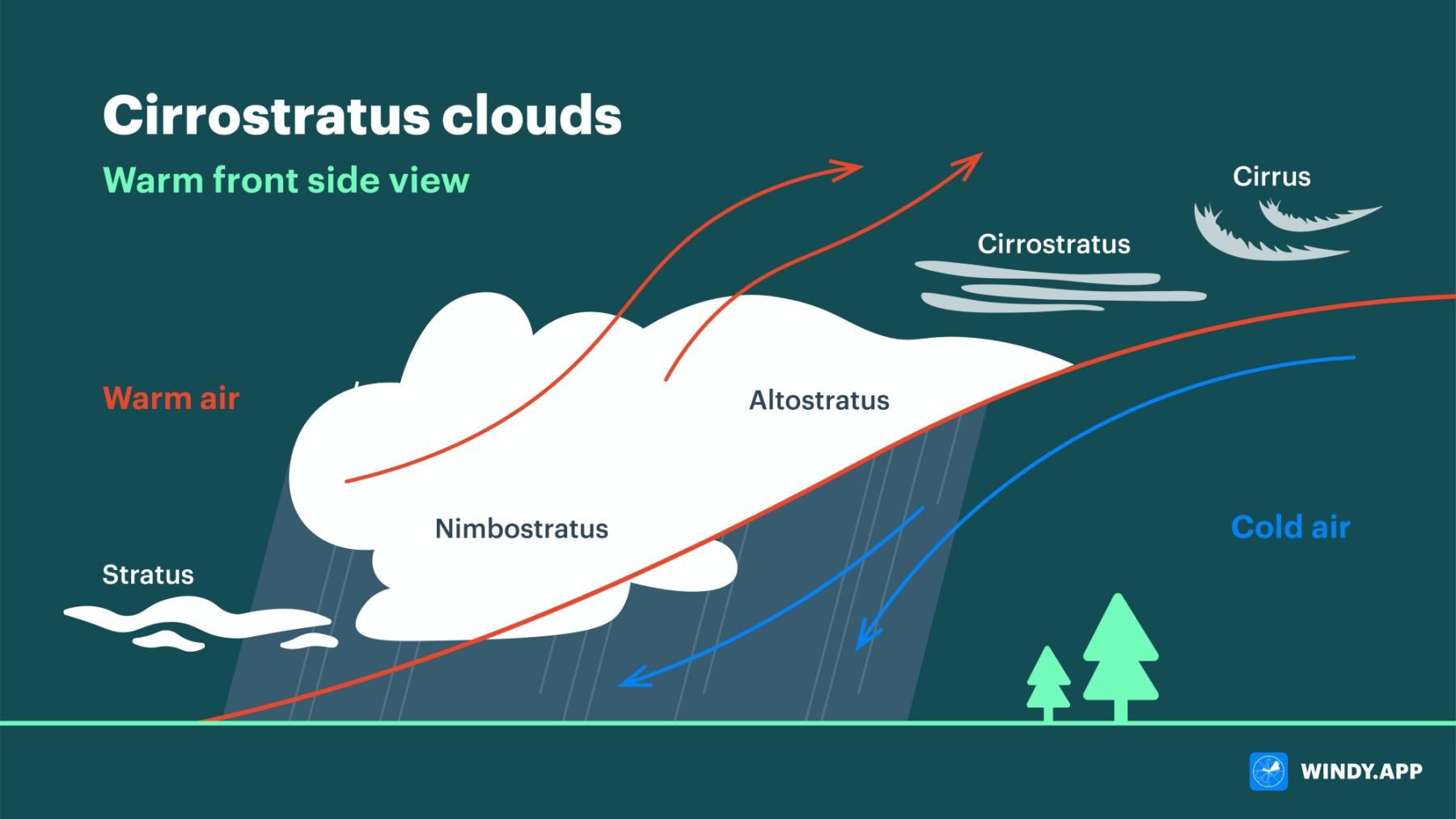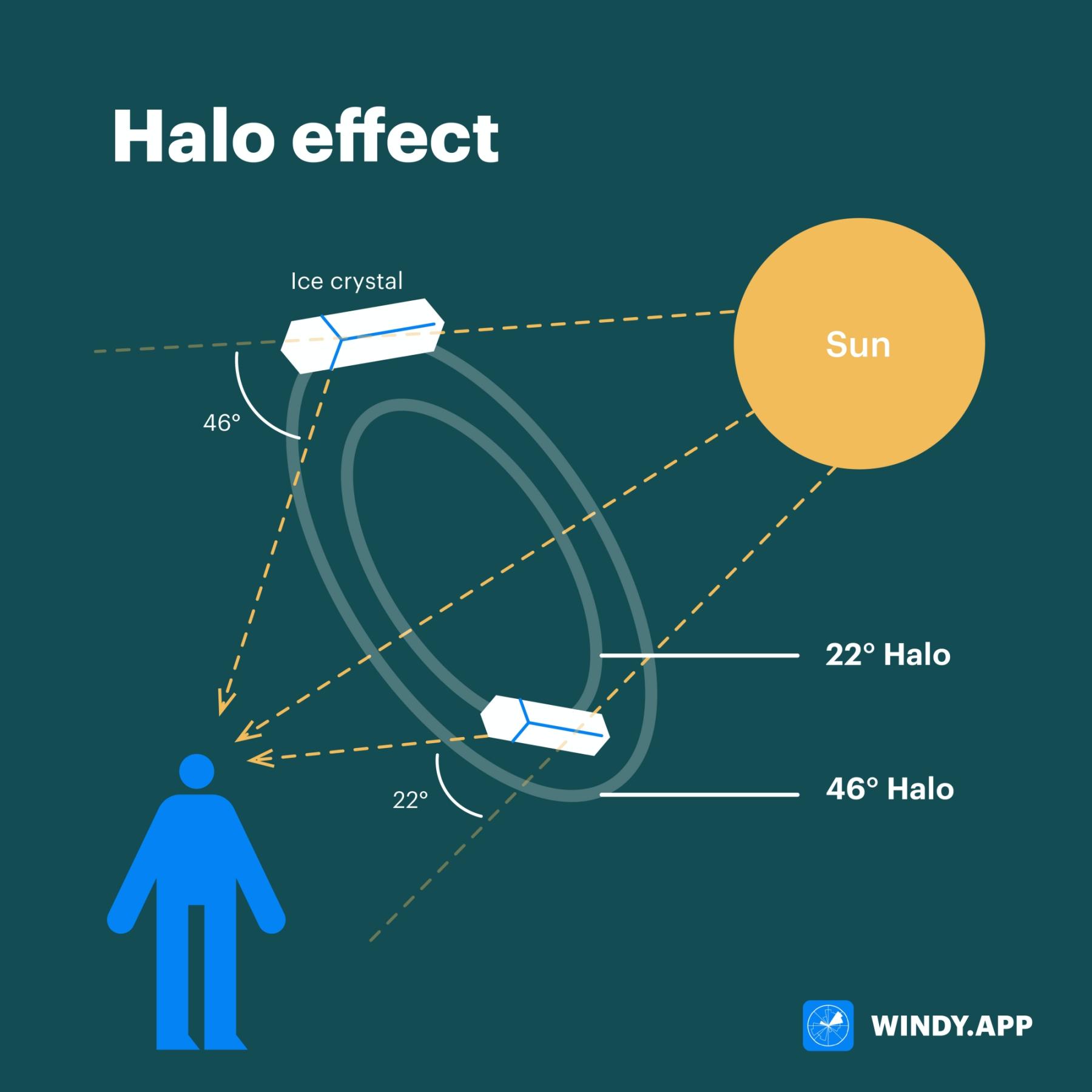
Why do we see a circle around the sun? Halo's simple explanation
Sometimes a halo can be seen in the sky around the Sun or the Moon. Why does it appear? Halo only occurs with cirrostratus or cirrocumulus clouds. In this new lesson of the Windy.app Meteorological Textbook (WMT) and newsletter for better weather forecasting you will learn more about Halo.
These occur when humid air manages to rise really high - to over 6 km. Here water drops turn into ice crystals. Why can humid air rise that high? For instance, due to a warm front - when warm air crawls over a wedge of cold one and “creeps” up along it.
Cirrostratus clouds look like a white semitransparent sheet. They can cover the whole sky but you can see the Sun or Moon through them.

Cirrostratus clouds formation. Illustration: Valerya Milovanova / Windy.app
Such a cloud consists of ice crystals. Different optical phenomena can occur — depending on the form of the crystal. For example, if the cloud consists of hexagonal crystals, we can see a halo around the Sun.
When you look at the Sun you see rays directed straight at your eyes. The ice crystals focus the rays so that they’re once again directed at your eye. Thus, we see the Sun and the circle around it.
Important: don’t look directly at the Sun, it’s dangerous.
Cirrostratus clouds and halo come a day or two before the warm front. The latter brings rains. So get your umbrellas ready when you see a halo.
Also important: all of the above concerns temperate latitudes. Tropical latitudes and the equator have different patterns.

Halo effect. Illustration: Valerya Milovanova / Windy.app
Text: Windy.app
Illustration: Valerya Milovanova, an illustrator with a degree from the British Higher School of Art an Design (BHSAD) of Universal University
Cover photo: Sung Jin Cho / Unsplash
You will also find useful
What is turbulence in simple words
Latest News
Professional Weather App
Get a detailed online 10 day weather forecast, live worldwide wind map and local weather reports from the most accurate weather models.
Compare spot conditions, ask locals in the app chat, discover meteo lessons, and share your experience in our Windy.app Community.
Be sure with Windy.app.



